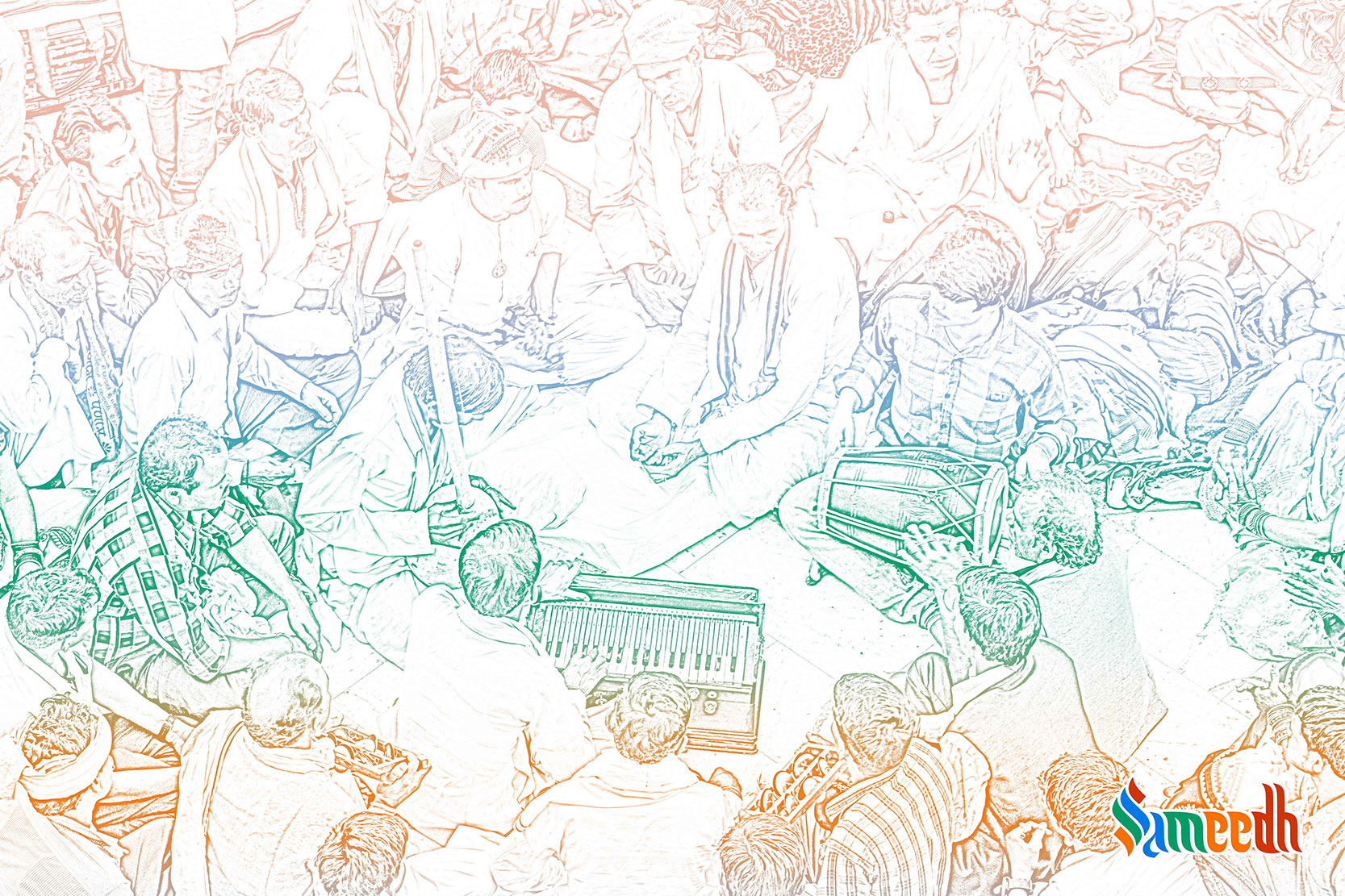Meaning, significance and purpose of this Indian religious music form

Bhajan is a devotional song or hymn in Hinduism, this is often a form of worship. It originates from the Sanskrit word Bhajanam, where Bhaj is the root word translating to revere. The entire word means reverence or respect. It also equates to sharing at times, devotion, care, love, faith, religious principles, spirituality, glorification of god, salvation etc.
Bhajan and Hinduism
These are lyrical songs and mantras which can be both easy to grasp and complex in nature like Dhrupad or Kirti, genres of music in Hinduism. They contain praises, love, gratitude, offerings to the supreme powers. Bhajans are melodies, simple and catchy for people to understand and learn with comfort. They have repetition in the chorus as they are ideally sung in groups and it becomes easy to coordinate. It can be sung individually, but often is something that is practised amongst the masses. It is deemed as a group activity which can bring communities closer and together, instilling a sense of unity, devotion and faith. Which is why the songs even have rhymes, are easy to recite and repeat after. During pooja or rituals, one person sings one or two lines at a time, which is then sung by the entire gathering of worshippers in temples or religious meetings. These are termed as Bhajan Mandals, the coming together of worshippers and the lead singer is the Bhajanik.
Oftentimes a group event where devotees gather to praise gods and goddesses through hymns and songs is Bhajan. The songs can be sung by one or more people and it is complimented with musical instruments like Tabla, Dholak, Manjira, small bells, clapping and dancing too at times. An idol or photo of gods or goddesses is kept which is offered the prayers too along with flowers, lamp lighting, Arti and certain religious customs. Beside Hinduism, it is also practised in Jainism. Vaishnavism or worshippers of lord Vishnu, god of preservation regularly sing Bhajans while worshipping the god.
Majority of the Hindu Bhajans originate from the story of the Indian epics of Ramayan and Mahabharat. These Bhajans have the central deity as Ram, Laxman, Shiva, Hanuman, Krishna and more, their acts of bravery, life journey and praises of their strengths. These can be biographical in nature too.
The lines of the Bhajan can be divided broadly into two types; namely Pada and Dhruva Pada. Dhruva Pada is the main or identifying couplet which is sung at the very beginning of every verse and embarks the start of any new paragraph. The Pada are the lines that follow or succeed the Dhruv Pada and these lines are not repetitive like the latter which remains the same at the start of every verse.
Tulsidas, Kabir, Rumi, Surdas, Meera, Nanak are well known composers of Bhajan. Achyutam Keshavam, Ae Mallik Tere Bande Hum, Hey Govind, Hey Gopal, Itni Shakti Hume Dena Data are widely recognised names of Bhajans.
Bhajans and Spirituality
Bhajans can help connect devotees with the music of their inner self. It is a form of meditative practice when done rightly. One can sing these Bhajans and lose themselves in the music or the lyrics while being mindful and conscious. It encourages one to silence the thoughts in the mind and focus solely on the inner rhythms of the body. A lot of yogis use this to reach a spiritual and higher state of consciousness by focusing on the third eye or ajna chakra, an energy focal point to awaken the inner sounds. An apt asana or Yoga position for this is Malasana, where one can cover their ears too to block out noise in the surroundings
